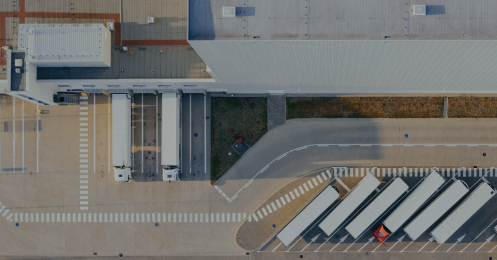Determining the price of a product isn’t as simple as an all over product price markup. Business owners running a growing wholesale distribution business, should be tracking landed costs to get a better understanding of how much you pay to sell a product.
What is Landed Cost?
The landed cost of a product includes all the expenses related to shipping it to the final destination, i.e., you as the distributor/wholesaler. While these costs can usually simply be added up, its rare that you’ll know the exact amount when at the time of ordering the product or shipment arrival.
In order to make informed pricing decisions, you should be calculating the landed cost of a product. This requires apportioning costs across multiple items in the same shipment and dealing with currency exchange rates.
Proper landed cost tracking software will be able to automatically do the calculations for you, but it’s important you understand the methodology behind how these costs are calculated.
Costs to take into Account
Beyond the obvious - the price I'm paying the supplier of the products I'm purchasing - the basic rule of thumb is to include all costs directly incurred in getting those purchased products into your warehouse. This would typically include, at a minimum, freight costs. For imported products, there's often duty and brokerage costs. Others include insurance, storage costs, purchasing agency commissions and other regulatory fees.
- Supplier’s cost
- Freight
- Duty & Brokerage
- Insurance
- Storage
- Purchasing Agency Commissions
- Regulatory Fees
What if I only get the true costs on invoices long after the shipment arrives?
With factors like freight, that's often the case. In order to calculate a true landed cost at the time you receive a shipment, you'd have to use estimates for many of the non-supplier costs. For so many business reasons, it's critical that you have a very clear idea of likely costs before you incur them. With the right processes in place, a business should have no real problems coming up with estimates that are very close to the actual costs. The key is to then have a good process for reconciling the actual bills (when they arrive) against the estimates you've used - something that a good ERP Inventory Accounting Software system should facilitate.
How do I apportion these costs across multiple items on the same shipment?
The best approach to apportion a cost factor over multiple different products on the same shipment is to use the calculation method that most closely mirrors the way that cost is constructed.
For example, duty is usually very simple, as it's a straight percentage of the value - so that's how you'll apply it, using the appropriate percentage(s). Freight would typically be pro-rated based on either weight or cube, depending on how the carrier charges for transportation. And it is of course important to factor in currency exchange rates, because it's not uncommon for importers to be incurring costs in two or more currencies. For currency conversion, assuming you have not hedged currencies, the guidelines say to use the exchange rate on the date of receipt of the goods.
Example of a Landed Cost Formula:
Supplier’s Cost + (Duty Percentage x Supplier’s Cost) + ((Shipping Fees x Percentage of Total Shipment) /100
Information for 100 Gold Pens received as part of a shipment:
- Supplier Cost: $0.50 per unit
- Duty Applicable at 2%
- Freight cost for the entire shipment was $500
- Gold pens represent one quarter of the shipment by cube
In this case the formula for each unit would be:
$0.50 + (2% x $25) + ((500 x25%) / 100) = $1.76
Broken down further, this formula looks like this:
- Each Gold Pen costs $0.50
- $0.50/Gold Pen * 2% duty = $0.01/widget
- $500 for entire shipment x ¼ of the container = $125 for 100 Gold Pens= $1.25/widget
- Total Cost = $0.5 Gold Pen + $0.01 + $1.25
Total Cost per Gold Pen = $1.76 or $1.26 in landed costs
What to do with this information
As you can see above, you would pay$1.26 per gold pen in just landed costs. If you already know what you want your profit margins to be, keep the $1.26 when determining the selling cost of your products.
What’s Next?
This type of calculation can be a time-consuming manual process, which is why it is crucial to invest in a robust system to automatically calculate all the costs accrued along the way.
Organizations that embrace accounting and inventory management ERP software benefit from streamlined business processes, greater market intelligence, lower inventory and transportation costs, and faster responsiveness to changing market dynamics. The ideal solution for your growing mid-sized company is a mid-range, flexible package capable of handling business complexity, allowing some customization, which is scalable to help your company grow.
Specific needs often differentiate your business from your competitors, so it is essential that any accounting software is flexible enough to work with your existing processes to maintain that critical edge.
Tangible benefits and satisfactory returns vary from business to business. But, every business, including yours, can enjoy the immediate results of increased automation in landed cost calculations -increased profits, decreased costs, and no surprises at year-end.
It is critical that the system your business chooses can take all the pieces of the business and integrate them into one database to make communications seamless. Completing a needs analysis prior to researching available and affordable systems will help aid in the search. You must also consider whether or not your new system has the ability to expand and grow along with your company.
Video: Blue Link ERP - Landed Cost Tracking Software










